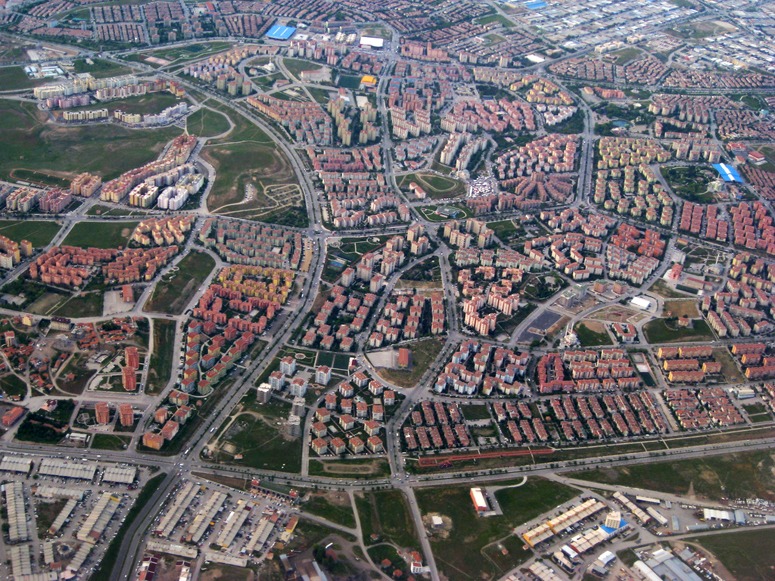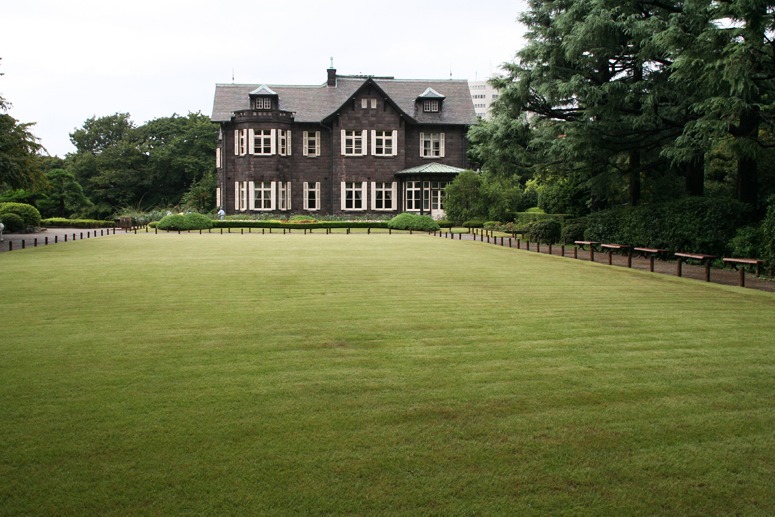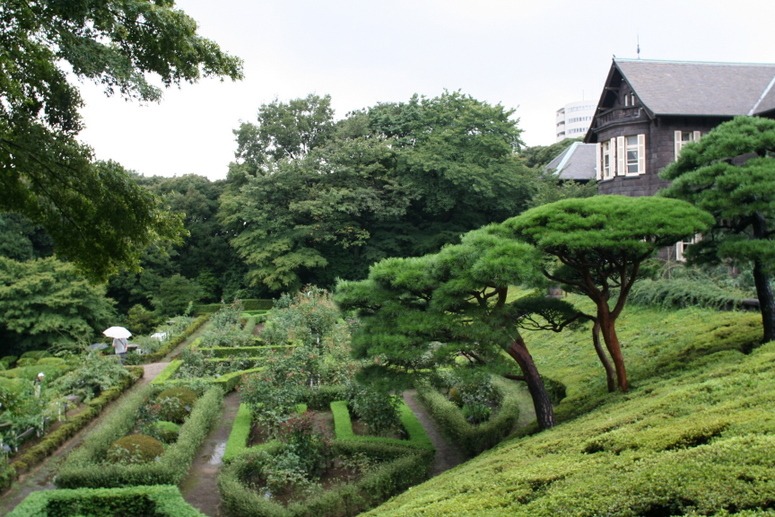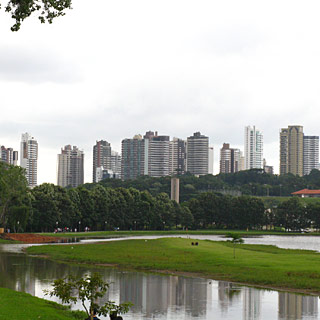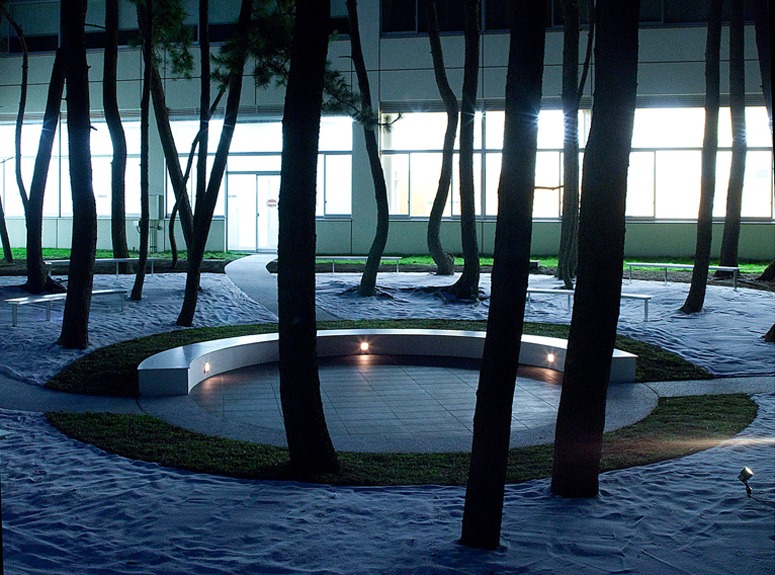 Japan was the first Asian country to modernise its industry but always wanted to retain its unique identity. This turned out to be more difficult for buildings than for gardens. Haruko Seki is a Japanese landscape architect based in London. Perhaps for this reason, she has a keen eye for something essentially Japanese which is not sentimentaly ‘Old Japan’ We saw this in her Silver Moonlight Garden at the 2008 Chelsea Flower Show and are pleased to see it again in the above photograph of the Garden of Pine Woods for Niigata Seiryo University Campus, Niigata City, Japan (completed 2010). The courtyard was designed to become a central event stage and a space where everyone can meet. The structural form gleams softly through the shadow of pines, reflecting and enhancing their beauty. There is a Wabi-Sabi combination of purity with imperfection, because the trees do not allow perfectly complete circles. Sitting beneath the colling shade of pine trees is a pleasant activity in the hot humid shade of a Japanese summer. It is a context-sensitive design, functionally, climatically, culturally and aesthetically. The V-sign is also a context-sensitive gesture. In England it symbolises vulgar aggression (with the palm facing backwards) and victory, as in the Churchill salute, with the palm facing forwards. In Japan and much of East Asia, it became associated with peace and happiness, after the 1972 Olympic Games.
Japan was the first Asian country to modernise its industry but always wanted to retain its unique identity. This turned out to be more difficult for buildings than for gardens. Haruko Seki is a Japanese landscape architect based in London. Perhaps for this reason, she has a keen eye for something essentially Japanese which is not sentimentaly ‘Old Japan’ We saw this in her Silver Moonlight Garden at the 2008 Chelsea Flower Show and are pleased to see it again in the above photograph of the Garden of Pine Woods for Niigata Seiryo University Campus, Niigata City, Japan (completed 2010). The courtyard was designed to become a central event stage and a space where everyone can meet. The structural form gleams softly through the shadow of pines, reflecting and enhancing their beauty. There is a Wabi-Sabi combination of purity with imperfection, because the trees do not allow perfectly complete circles. Sitting beneath the colling shade of pine trees is a pleasant activity in the hot humid shade of a Japanese summer. It is a context-sensitive design, functionally, climatically, culturally and aesthetically. The V-sign is also a context-sensitive gesture. In England it symbolises vulgar aggression (with the palm facing backwards) and victory, as in the Churchill salute, with the palm facing forwards. In Japan and much of East Asia, it became associated with peace and happiness, after the 1972 Olympic Games.
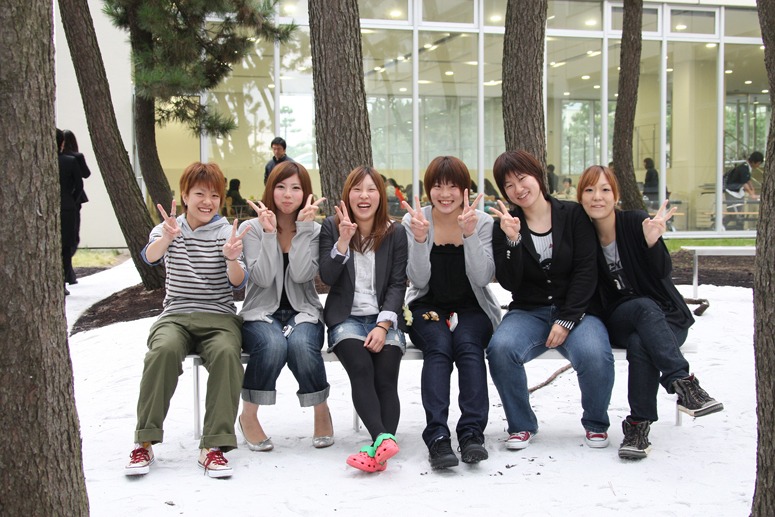
Images and information on Garden of Pine Woods for Niigata Seiryo University



